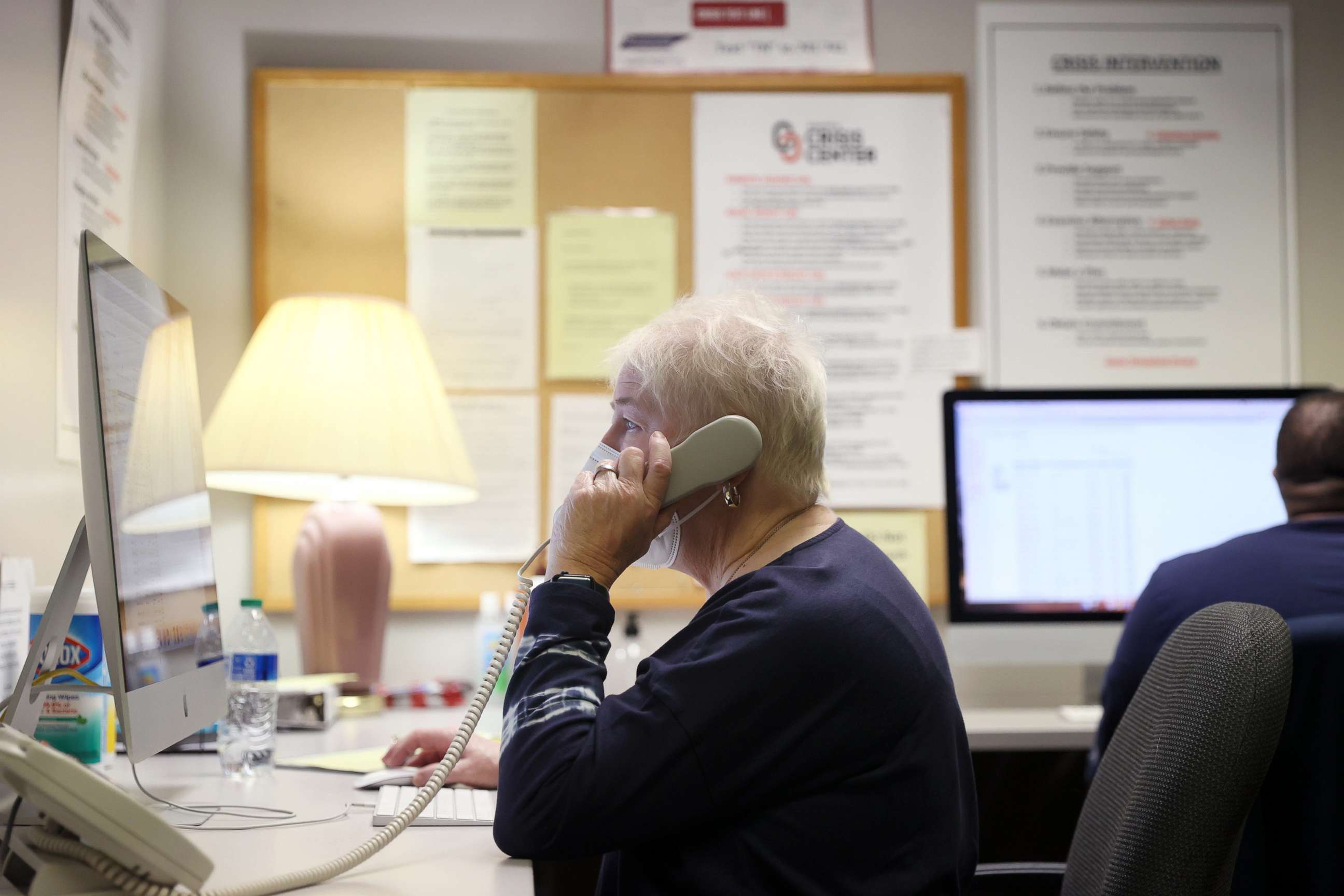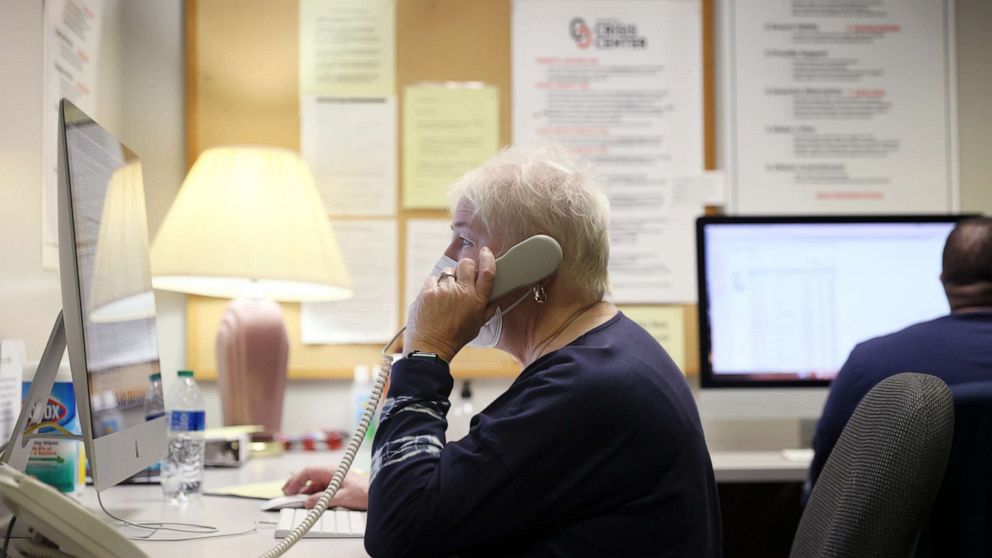Crisis lines and helplines are not the same, but experts say we need both
The past few years have seen a growing mental health crisis, prompting an increasing number of Americans to seek help through confidential telephone support lines.
But no two support lines are exactly the same. Crisis lines are intended for those undergoing an urgent mental health crisis and in imminent danger, like someone considering suicide. Helplines are designed for non-urgent needs, such as those seeking support and resources for depression, anxiety and other mental health disorders.
Experts said knowing the right one to call can help get you the specific help you need faster.
Everyone in the U.S. should feel empowered to call 911 if they experience distress, crisis or suicidal ideation, experts said. But for those experiencing suicidal thoughts, another option is 1-800-273-8255 [TALK], the National Suicide Prevention Lifeline, a crisis line that consists of a network of more than 200 crisis centers. In July, 988 will replace the 10-digit number as the new 24/7 Lifeline number.
"We are trained to de-escalate a situation," Mary Givelber, executive director of Caring Contact, a member of the National Suicide Prevention Lifeline located in New Jersey, told ABC News.
She said that “we listen, we do not fix,” and volunteers “encourage them to take charge of where they are in that moment.”

However, if someone is in imminent danger, crisis lines can sometimes activate emergency services that send a mobile crisis unit or ambulance, but experts said this is rare.
"When police and ambulances show up and fire trucks often come out and the lights are on, this becomes a very traumatic experience for that individual," Givelber said. "So we are trained to try and find the safest, least intrusive way of keeping somebody, we call it, ‘safe for now.’”
Additional resources are available for people who need help but are not experiencing an immediate crisis, such as suicidal thoughts.
Helplines offer information on where to find local mental health resources. One option is the National Alliance for Mental Illness (NAMI) HelpLine (1-800-950-6264), where volunteers are on standby to connect people to mental health services.
“The crisis call counselors can address the immediate crisis, but we want an individual to get well and stay well,” Hannah Wesolowski, chief advocacy officer for NAMI, told ABC News. “And so it’s those local call centers that can connect an individual to resources and services in their communities.”
The resources offered vary by location.

"There are some call centers that have the capacity to make same-day or next-day appointments with community mental health providers or refer them to services within the community," Wesolowski said.
There are also helplines that focus on the needs of specific populations like the new National Maternal Mental Health Hotline launched this week by the U.S. Health and Human Services Department. It’s available by calling or texting 1-833-9-HELP4MOMS.
Then there are warm lines, a service growing in availability, which is a middle ground between crisis lines and helplines. People can call in to discuss non-urgent matters and are offered emotional support.
"The warm line is actually a phone line where they have volunteers, peer support volunteers, who will just talk to people. There’s no urgency around the conversation. They just get to listen reflectively and help people process and offer emotional support," Dawn Brown, the national director of NAMI HelpLine Services, told ABC News.
Many call centers are staffed by volunteer peer-support specialists, "that means someone with a mental health condition and they’re now long into their recovery, or the family member supporting a loved one who’s in recovery,” said Brown.” Others are staffed by paid employees. Volunteers and employees undergo weeks of standardized training and quality assurance measures are in place.
What happens if you call the ‘wrong’ line?
In some states like New York and Georgia, one number serves not only as a crisis line, but also a helpline and warm line. But in locations where they are distinct, efforts will be made to direct you to the correct service.
For example, Brown explains at the NAMI HelpLine they “do a suicide risk assessment and if the person is deemed to be at imminent risk, we attempt what we call a warm transfer where we will keep the caller on the line and connect with the Lifeline to hand the person off to a crisis worker.”
But not all calls are transferred. If someone calls a crisis line and is specifically looking for resources, they may only be referred to a helpline.
Calling the appropriate line could help ease the burden on crisis centers. On average, 15% of calls to the National Suicide Prevention Lifeline don’t go through because of extended wait times, resulting in callers dropping the call.
According to Wesolowski, more federal funding is needed to increase staffing, “upgrade technology, data collection, developing training, and operating those back-up centers.”
"Time and time again, what we hear is thank you for listening to me. Thank you for hearing my story," Givelber said.
If you are struggling with thoughts of suicide or worried about a friend or loved one, help is available. Call the National Suicide Prevention Lifeline at 1-800-273-8255 [TALK] for free, confidential emotional support 24 hours a day, seven days a week.
If you or someone you know needs help, contact NAMI HelpLine from 10 a.m. - 10 p.m. ET Monday to Friday at 1-800-950-NAMI [6264] or info@nami.org.
Adjoa Smalls-Mantey, M.D., D.Phil., is a psychiatrist, trained in immunology, and a contributor to the ABC News Medical Unit.




